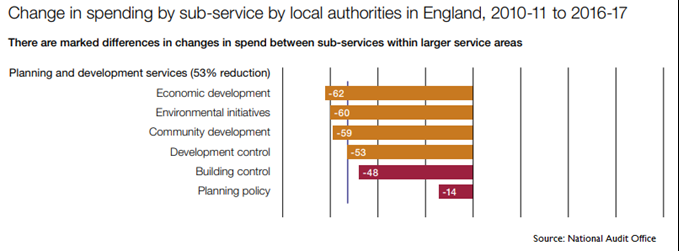Theresa May delivered another speech last week where her fake brick backdrop perhaps garnered more reaction than what she was actually saying.
For those that were listening, her words seemed to repeat a favourite message that private sector house builders should be targeting build volumes rather than profits and that the green belt should remain sacrosanct – one of those more expected from a Conservative Prime Minister than the other. Concurrently, MHCLG published the proposed revisions to the National Planning Policy Framework (NPPF) that lay out the policies and technical detail behind the Prime Minister’s discourse.
In brief, the key changes to planning policy are:
Local housing targets
Already trailed in the Housing White Paper in February 2017, local authorities will be required to lay out strategic plans for local housing that are based upon a local housing need assessment, conducted using a new standardised methodology that takes into account household growth projections, plus an upward adjustment applied in areas of low affordability, based on a benchmark local house price-to-earnings ratio of 4.
Local planning authorities should then identify and update annually a supply of deliverable sites to provide a minimum of five years’ worth of housing against these housing requirements.
Delivery of net additional dwellings against targets will then be assessed and if housing delivery over the previous three years is below 95% of the a local authority’s housing requirement, it would need to put an action plan in place. From 2020, if delivery falls below 75% of the requirement, an automatic presumption in favour of development will apply to sites.
Viability assessments
Local authorities will be expected to calculate a benchmark land value for viability of development during the plan-making process and agree affordable housing obligations with developers before planning applications are submitted. This aims to reduce cases where affordable housing obligations are negotiated down after planning approval. Viability assessments will then only be required where final plans submitted by developers do not match the affordable housing provision suggested by local authority viability calculations agreed to when the planning application was submitted. In these cases, viability assessments will have to be made public.
Over the longer-term, government intends for contributions to affordable housing and community infrastructure to be set nationally, and to be non-negotiable, subject to consultation.
Green Belt
Given the tone of the Prime Minster’s speech on the green belt, it was no surprise that protection of such land was retained, with local plans to prioritise brownfield or under-used sites and sites well-served by public transport, increase densities around transport hubs and the principle of common ground among local authorities, allowing allocation of sites in neighbouring authorities instead of green belt development.
The government’s desire to embed strategic planning into housing is commendable, particularly as planning is frequently developers’ biggest bugbear. The rhetoric in the Theresa May’s speech did throw up some issues, however.
- Local authorities are clearly expected to play a major role in housing policy, planning and delivery, yet remain financially constrained. A report last week from the National Audit Office highlighted the extent to which local authority spending on planning has been cut since a period of austerity began in 2010.

- The Prime Minister’s threats to remove Help to Buy or refuse or remove planning permission for developers who are not deemed to be building quickly enough appear self-defeating given that the private sector delivers around 80% of total completions and relies on a business model of building at a rate that can be ‘absorbed’ by demand, in turn dependent on wider economic and market conditions. It is not clear if developers would be expected to build out at 2016 and 2017 rates in the event of a downturn, for example. House builders also frequently cite that discharge of planning conditions – sometimes taking two years of negotiations – is what delays starts on permissioned sites.
- The backlash from local authorities has been the strongest, some facing the politically difficult task of substantially increasing development within their boundaries. Some of the differences between existing local housing needs assessments and the volumes produced from the new methodology are huge. London boroughs seem most acutely affected, likely reflecting existing large estate regeneration increasing population inflows in recent years, which feed through into future local population growth projections. Greenwich, for example, has had the redevelopment of the Greenwich Peninsula (15,000 new homes), Woolwich Arsenal (5,000 new homes) and Kidbrooke Village (2,800 net gain in new homes) and is the local authority with the largest difference between its current and proposed housing need.
Local government has, not surprisingly, also taken issue with the task of ensuring delivery of centrally-prescribed housing targets, without allowances to build themselves. Ironically, it was Theresa May herself who offered the best summary of this predicament in her speech:
